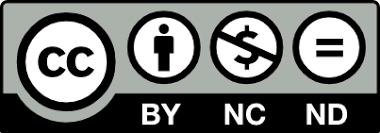TOWARDS THE TREATMENT OF POLYSEMOUS TERMS
On the example of trigger
DOI:
https://doi.org/10.52340/PUTK.2024.2346-8149.09.09Keywords:
Terminology, Explanatory-Combinatorial Lexicology, Frame-based Terminology, Semantic Bridges, Polysemy in TerminologyAbstract
The world of terminology has experienced a significant shift over the past two decades. Traditionally, terms were seen as univocal, but this perception has changed as terms have evolved, developing polysemy, homonymy, and synonymy. This evolution has brought them closer to the structure of general-language words, blurring the lines between the two. The terminologization of general-language words, determinologization of terms, and term migration between multiple domains through metaphorization have also become widespread, adding to the complexity of the field. This dynamic landscape necessitates a reevaluation of existing terminological and terminology-adjacent lexicological theories and the development of new methodologies for terminology treatment, management, and visualization in dictionaries. This paper introduces a novel approach to terminology meaning analysis. By synthesizing and transforming lexicological theories (Explanatory-Combinatorial Lexicology, more specifically, Semantic Bridges, and Frame-Based Terminology), as well as implementing Etymology and Definition analyses, we aim to provide a comprehensive understanding of the meanings of polysemous terms. Moreover, several digital research resources and software tools were used to analyze empirical data. Thus, our methodology offers a fresh perspective on the terminological dictionary entry.
Full Text (PDF)
References
Barsalou, L. W. (2003). Situated Simulation in the Human Conceptual System. Language and Cognitive Processes, 18(5-6), 513-562.
Barsalou, L. W. (2008). Grounded Cognition. Annual Review of Psychology, 59, 617-645.
Brezina, V., & Platt, W. (2023). #LancsBox X [software]. Lancaster University. Retrieved from http://lancsbox.lancs.ac.uk.
Brezina, V., Weill-Tessier, P., & McEnery, T. (2020). #LancsBox v. 5.x. [software]. Retrieved from http://corpora.lancs.ac.uk/lancsbox
Cabré Castellví, M. (1995, January). On diversity and terminology. Terminology. International Journal of Theoretical and Applied Issues in Specialized Communication, 2(1), 1-16.
EGPC. (2014). English–Georgian Parallel Corpus. (Ilia State University) Retrieved from https://corp.dict.ge/
Evans, V. (2007). A Glossary of Cognitive Linguistics. Salt Lake City: University of Utah Press.
Faber, P. (2009). The cognitive shift in terminology and specialized translation. MonTI. Monografías de
Traducción e Interpretación(1), 107-134. Retrieved from LexiCon Research Group: http://lexicon.ugr.es/fbt
Faber, P. (2011). The dynamics of specialized knowledge representation: Simulational reconstruction or the perception–action interface. Terminology. International Journal of Theoretical and Applied Issues in Specialized Communication, 17(1), 9-29.
Faber, P. (2012). A Cognitive Linguistics View of Terminology and Specialized Language. Berlin, Boston: De Gruyter Mouton.
Faber, P. (2015). Frames as a framework for terminology. In H. J. Kockaert, & F. Steurs (Eds.), Handbook of Terminology (pp. 14-33). Amsterdam: John Benjamins Publishing Company.
Faber, P., & Mairal, R. (1999). Constructing a Lexicon of English Verbs. Berlin, New York: Mouton de Gruyter.
Felber, H. (1984). Terminology Manual. Paris: Unesco and Infoterm.
Fillmore, C. J. (1985). Frames and the Semantics of Understanding. Quaderni di Semántica, 6(2), 222-254.
Fillmore, C. J. (2006). Frame Semantics. (D. Geeraerts, Ed.) Cognitive Linguistics: Basic Readings, 373-400.
Higuchi, K. (2016). A Two-Step Approach to Quantitative Content Analysis: KH Coder Tutorial using Anne of Green Gables (Part I). Ritsumeikan social sciences review, 52(3), 77-91.
Higuchi, K. (2017). A Two-Step Approach to Quantitative Content Analysis: KH Coder Tutorial using Anne of Green Gables (Part II). Ritsumeikan social sciences review, 53(1), 137-147.
Kingscott, G. (1998, August). Tribute to the founder of terminology. Language Today, 14-19.
L'Homme, M.-C. (2020). Lexical Semantics for Terminology: An introduction. Amsterdam / Philadelphia: John Benjamins Publishing Company.
Martin Mingorance, L. (1989). Functional Grammar and Lexematics. (J. Tomaszczyk, & B. Lewandowska, Eds.) Meaning and, 227-253.
Mel’čuk, I. (2013). Semantics. From Meaning to Text (Vol. 2). Amsterdam/Philadelphia: John Benjamins Publishing Company.
Mel’čuk, I., & et al. (1984-1999). Dictionnaire explicatif et combinatoire. Montréal: Presses de l’Université de Montréal.
Mel'čuk, I. (2006). Explanatory Combinatorial Dictionary. In G. Sica, Open Problems in Linguistics and Lexicography (pp. 225-355). Monza: Polimetrica s.a.s.
Mel'čuk, I., Clas, A., & Polguère, A. (1995). Introduction à la lexicologie explicative et combinatoire. Bruxelles: Duculot.
Nedobity, W. (1983). The General Theory of Terminology: A Basis for the Preparation of Classified Defining Dictionaries. Dictionaries: Journal of the Dictionary Society of North America(5), 69-75.
Pustejovsky, J. (1995). The Generative Lexicon. Cambridge, MA.: MIT Press.
Ruppenhofer, J., Ellsworth, M., Petruck, M. R., Johnson, C. R., Baker, C. F., & Scheffczyk, J. (2016). FrameNet II: Extended Theory and Practice.
Sager, J. C. (1990). A Practical Course in Terminology Processing. Amsterdam / Philadelphia: John Benjamins Publishing Company.
Sinclair, S., & Rockwell, G. (2024). Voyant Tools. Retrieved from Voyant Tools: https://voyant-tools.org/
Terminotix. (2019). SynchroTerm. Retrieved from SynchroTerm. Bilingual Term Extraction Software: https://terminotix.com/index.asp?content=brand&brand=4&lang=en












